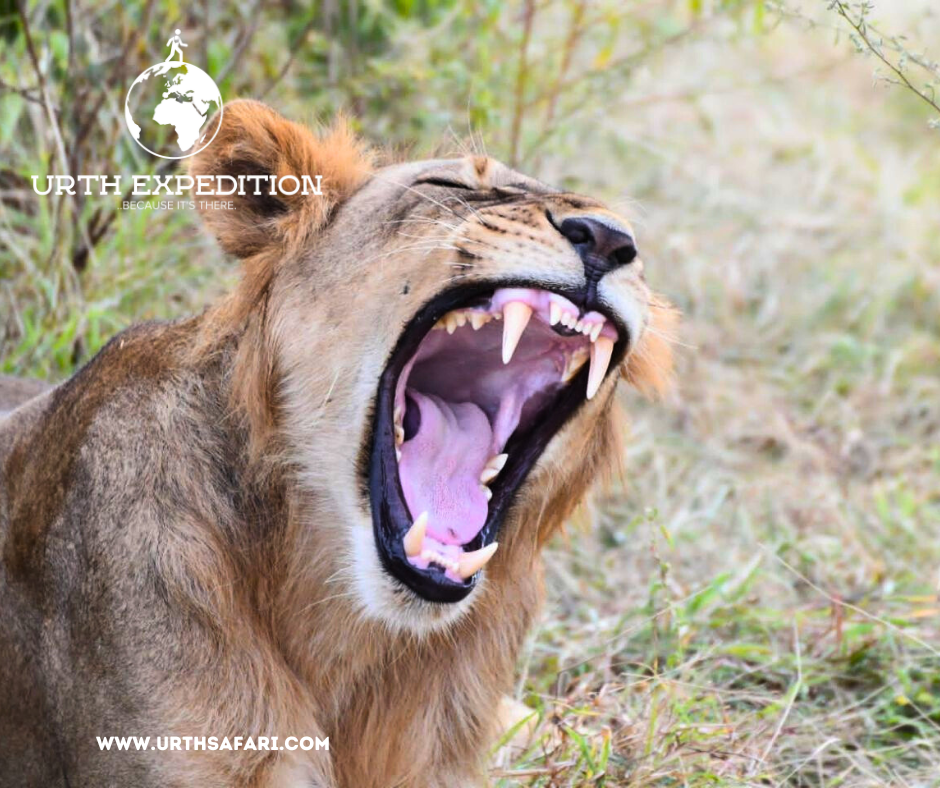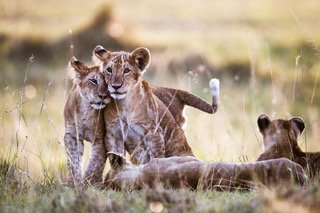Interesting Facts About African Lions
Lions are one of Africa’s most recognizable animals, more than any other animals in the African wilderness. A lion is different from most other wild cats in that they have a deep muscular chest with a short but rounded head. They have short necks, rounded ears, and a hairy tuft on the end of their tails. The male is easily distinguished from the female, as they have a prominent mane. An adult lion’s coat is yellow-gold, while young cubs have some light spots that disappear with age.
The Lion is the second largest cat in the world, following the Tiger. It belongs to the Felidae cat family, including tigers, leopards, and jaguars. Although the Lion is sometimes referred to as the king of the jungle, they live in open woodlands or scrubby grasslands where they can readily hunt their food. Except for tropical rainforests, lions are adaptable creatures that can thrive in most settings.
These magnificent cats once roamed through all of Africa; however, due to human conflicts and other factors, they are now found in East and Southern Africa, with a handful of individuals in West Africa.
Below are ten interesting facts about African lions.
A lion’s roar can be heard from over 8 km away
Someone can hear a lion’s roar up to 8 kilometers away from the source. Lions use these mighty roars to frighten off competitors and demonstrate their size and power. This is one of the great sounds you can hear on a safari and echoes through the night. Males have a more resounding roar than the lionesses.
Additionally, lions are the only cats who roar together. A group of lions, called ‘a pride’, often roars together to mark their territory.
African lions are the most social among all the big cats
Another interesting fact about lions is that are the most sociable of all carnivores. Lions live in groups of 15 to 25 members named “pride,” with most of the lioness and few cubs. There are 1 to 4 lions in the pride to protect the pride’s territory. As social predators, the lions give the highest priority to territory and pride.
It is the lioness who does the majority of the hunting.
Most of the hunting is done by lionesses as they have to feed the members and cubs of the pride. Amazingly, they are superior hunters to lions. Their speed is 30% faster than the speed of the Lion, thanks to their lightweight and flexible body.
A thinner body also allows them to remain hidden in the grass for longer, making it easier for them to hunt. Additionally, they collaborate to trap and catch their prey while employing cunning hunting strategies. Arent these interesting facts about lions?
Lions are vulnerable on the IUCN red list.
Due to pesticides, poisons, poaching, and trophy hunting, the number of lions in Africa has decreased by half since the early 1950s. According to the IUCN, mature lion populations are still declining. They are, therefore, on the vulnerable list even though they are not yet an endangered African species.
Lions can get their water from plants.
Due to their remarkable adaptability, lions can survive in arid environments like the Kalahari Desert. Most of their water supply in this area comes from their prey, though they will drink from plants like the Tsamma melon.
Lions can reach up to a speed of 80kmh.
The Lion can run 80 kilometers per hour, but only for a brief period. Despite having a heavyweight of between 190kg to 250kg and a large body structure, the Lion can reach up to a speed of 80 km/h for a short burst.
Lions can nap for 20 hours a day.
One of the most amazing facts about lions is they love to sleep. Lions can snooze for up to 20 hours a day, especially after finishing a large meal. You can see them napping under the tree while the herd of herbivores passes nearby. Note that lions do not sleep for 20 hours; most of the time, they snooze with one eye open.
Young male lions get kicked out of the pride by older males when they reach sexual maturity at about two years old.
Young males get kicked out of their pride once they reach maturity. They then live and roam in small groups, often with brothers, until they find another pride they can take over and breed with females.
Lions are big eaters.
On average, an African lion must consume 5-7 kg of meat daily to live healthily. However, Instead of daily meals, these predators can stuff themselves to bursting points at a single sitting. Lions can eat up to 40kg of meat in a single meal – around a quarter of their body weight.
Their tongues have sharp-pointed rasps, called papillae, used to scrape meat off the bones.
Lions hunt during storms.
Since their eyes have been used to the dark, lions hunt primarily at night, giving them a significant edge over their prey. They also hunt more during storms as the noise and wind make it harder for prey to see and hear them.
Lions have become a symbol of wild Africa; these majestic animals showcase power and beauty. Seeing one in the wild is one of the safari’s ultimate highlights.






